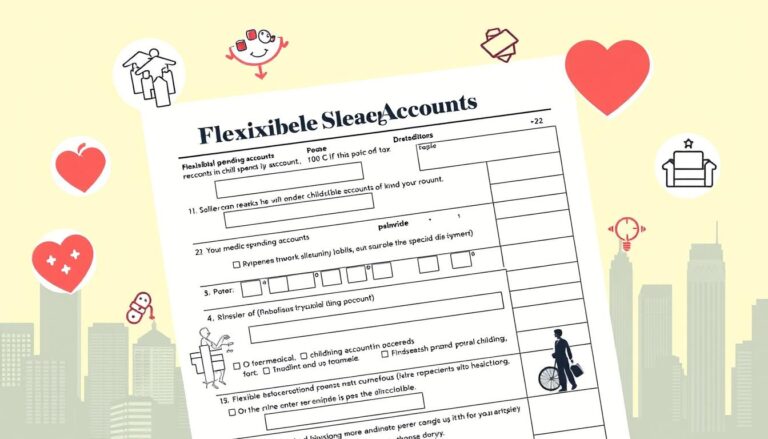Thinking about getting solar energy for your home? You might wonder about the tax benefits of solar loans. It’s key to know about financing options for solar installations to save money. The federal solar tax credit, or Investment Tax Credit (ITC), is a big help. It lets you deduct 30% of your solar system’s cost from your federal taxes.
This tax credit can really cut down what you owe. It’s more powerful than simple deductions. But, solar loans offer more than just tax benefits. Many people pay off their loans in just seven to nine years. Loan terms usually last from 10 to 25 years, making it a smart financial choice.
Key Takeaways
- The federal solar tax credit allows you to claim 30% of your system’s total cost.
- Most homeowners repay their solar loans within seven to nine years.
- Solar loans often have terms ranging from 10 to 25 years.
- Tax credits can significantly reduce your tax liability compared to deductions.
- Many solar loans come with dealer fees, impacting overall costs.
- Secured solar loans usually have lower interest rates due to less risk.
Understanding Solar Loans and Their Benefits
Solar loans are a great way for homeowners to go green. They help cover the high costs of solar panels. This makes it easier to switch to solar energy.
What Are Solar Loans?
Solar loans are made for installing solar energy systems. They pay for the panels and the setup. These loans have special terms for solar installations, offering fixed rates and flexible repayment plans.
For example, personal loan rates can range from 6% to 36%. Loan amounts can be from $1,000 to $100,000.
Why Choose a Solar Loan?
Choosing a solar loan means you own your solar system. This comes with big benefits, like federal tax credits that can cover 30% of costs. It’s a smart choice for the planet and your wallet.
With an average cost of $22,022 for a solar system, loans make it more affordable. This way, you can save money on your electricity bills over time.
Potential Cost Savings on Utility Bills
One of the best things about solar loans is saving on electricity bills. You could save about $40,000 over the life of your panels. This turns your investment into long-term savings.
Many people pay off their loans in about ten years. This means you’ll see lower bills sooner. With electricity prices going up, solar energy helps you save money and be eco-friendly.
Are Solar Loans Tax Deductible?
When you think about solar loans, you might wonder about taxes. The federal investment tax credit, or ITC, is key to understanding this. It lets homeowners deduct up to 30% of the cost of solar systems. This makes solar energy more affordable.
The Federal Solar Investment Tax Credit (ITC)
The federal investment tax credit is a big deal for solar system owners. If you install your system between 2022 and 2033, you get a 30% tax credit. For instance, an 8-kilowatt system costing $30,000 could save you $9,000 in taxes. This initial savings makes solar energy more accessible.
Eligibility Requirements for the Tax Credit
- You must own your home.
- The solar panels must be new and not previously used.
- The solar system must be owned, not leased. Homeowners who lease their solar systems are not eligible for the ITC.
- Installation must be completed by December 31, 2034.
Solar loans themselves aren’t tax-deductible. But, they help you get big tax breaks through the ITC. By filling out IRS Form 5695 and reporting the credit on Form 1040, you maximize your solar investment benefits.
How to Claim Your Solar Tax Credit
Claiming the solar tax credit is a smart financial move. It’s also key to getting the most from your renewable energy investment. Knowing what documents you need and the steps to file can help you save money.
Necessary Documentation and Forms
The first step is to gather the right documents. You’ll need:
- IRS Form 5695: This form is where you’ll officially report your solar installation costs.
- Invoices and Receipts: Documented costs for the solar equipment and installation will provide proof of expenses.
- Manufacturer Certification: A statement that confirms your equipment meets eligibility criteria is essential.
- Utility Rebates: Information on any rebates received will help adjust your claim, ensuring it’s accurate.
Steps to File for the Tax Credit
With your documents ready, it’s time to file. Follow these steps:
- Complete Form 5695: Fill out the form by detailing the costs associated with your solar installation.
- Include It with Your Tax Return: Submit Form 5695 alongside your federal tax return for the year in which the installation was completed.
- Double Check Your Figures: Make sure everything reflects accurate amounts, including any renovations that may have affected costs.
- Stay Aware of Filing Deadlines: Timeliness is key in the IRS tax forms process, so ensure you meet all relevant deadlines.
Additional Financial Incentives for Solar Installations
Want to make your solar energy project shine? There’s more than just the Federal Solar Investment Tax Credit. Many states offer great incentives and utility rebates to help you save money. For instance, Arizona and Massachusetts have excellent programs to boost solar energy use.
Also, don’t miss out on utility rebates. Energy providers give rebates for solar panel installations. These rebates don’t count as taxable income but can affect your federal tax credit. It’s all about saving as much as you can!
Lastly, look for financial aid for solar projects in your area. You might find property tax exemptions, sales tax exemptions, and low-interest loans. When you combine these with the federal tax credit, your solar installation costs drop. Plus, your energy bills will go down for years. Going solar is good for the planet and your wallet!








